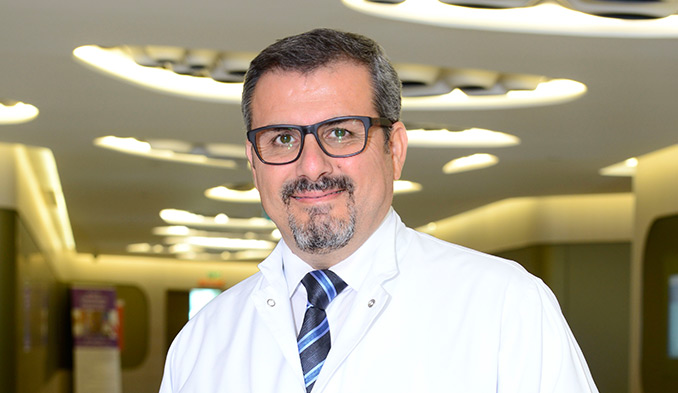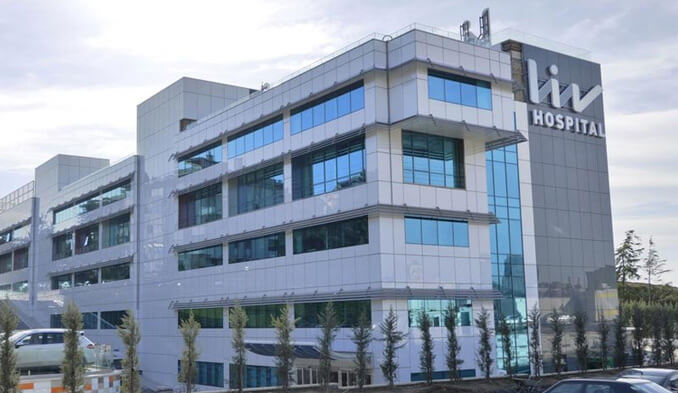Prof. Dr. Erdal Karayoz
What methods of treatment does prof. Karayoz in his practice?
There are two different methods of stem cell treatment:
- Allogeneic - the patient receives stem cells from a suitable donor.
- Autologous - the patient receives their own.
Prof. Karayoz - methods for allogeneic cell implantation:
- Allogeneic umbilical cord-derived mesenchymal stem cell MSCs - MSCs have the ability to differentiate into three germ layers, accumulate in damaged tissue or inflamed areas, promote tissue repair, and modulate the immune response. This cell type has many advantages. Mesenchymal stem cells (MSCs) form the group of stem cells that are most commonly used in clinical practice. Much research is being conducted on their regenerative characteristics and it is clear that they have a beneficial effect on the repair processes of many damaged tissues. MSC are used in clinical trials because of their self-regeneration anddifferentiation abilities, their role in tissue repair, and their immunosuppressive and neuroprotective effects.
- Allogeneic cultured placentas derived from multipotent mesenchymal stromal cells - Using this type of stem cells, one can achieve: improving endothelial function, stimulating angiogenesis and activating the body's own regenerative potential of its own stem cells.
Prof. Karayoz - Methods for autologous cell implantation
- Stromal Vascular Fraction (SVF)
SVF is derived from the patient's own adipose tissue. Adipose tissue is a rich and very convenient source of stem cells for therapeutic approaches in regenerative medicine. The stromal vascular fraction is a cell extract that is obtained in the laboratory from the body's own fat. SVF cells are obtained by liposuction and contain multiple cell types, including adipose-derived stem cells (ADSCs), mesenchymal and endothelial progenitor cells, leukocyte subtypes, lymphoid cells, pericytes, and vascular smooth muscle cells. SVF cells are processed such that they contain a reproducible and consistent composition of heterogeneous cells. When processed and administered, adipose tissue-derived SVF cells can differentiate into different tissue types, maintain neovascularization, replace cells, and repair traumatic problems.
- Autologous chondrocyte implantation (ACI)
In this method, mesenchymal stem cells are isolated from the patient's own cartilage tissue. Autologous implantation is a relatively new, advanced procedure used to treat isolated articular cartilage defects of the knee. ACI is also performed for patella (knee cap) defects. Autologous chondrocyte implantation is a two-stage surgical procedure.
First procedure
The first procedure is performed arthroscopically in less than 30 minutes. The surgeon takes a small piece of articular cartilage from the patient's knee. This cartilage biopsy is then sent to a lab where it is enzymatically processed to isolate chondrocytes, which are the cells that produce cartilage. Once these chondrocytes are obtained, they are sent back to the surgeon approximately 6 to 8 weeks later for implantation.
Second stage
The second-stage surgery is an open procedure in which a small patch is sewn over the plastic cartilage defect. The chondrocytes that are collected are injected under this patch, where they adhere to the patient's knee to form what is called hyaline-like cartilage, which resembles the joint's own cartilage. After implantation, there is a period of limited loading for up to 8 weeks. During this time, physical therapy is prescribed to improve range of motion and muscle strength. The surgeon may also recommend the use of robotic passive rehabilitation to ensure the success of the procedure. Return to light sports activities is usually allowed after approximately 6 months with return to full sports activities between 9 and 12 months after the procedure. The overall success rate of ACI is approximately 85%.
How do Prof. Dr. Erdal Karayoz and his colleagues apply stem cells?
Intravenous injection
Based on clinical data and research, stem cells cross the blood-brain barrier when injected systemically.
Procedure
The intravenous delivery method is a very simple process. A catheter is inserted into the patient's vein. Usually, sedation is not required for this procedure. The entire process of intravenous injection of stemhas less than 45 minutes.
Lumbar puncture
Procedure
This is a procedure used to access the cerebrospinal fluid of the brain and spinal cord and helps deliver stem cells directly into the cerebral spinal fluid, bypassing the blood-brain barrier. This is the least invasive method of delivering stem cells directly into the central nervous system.
Intramuscular and intra-articular injection of stem cells
Stem cells are injected directly into the injured muscle or joint.










